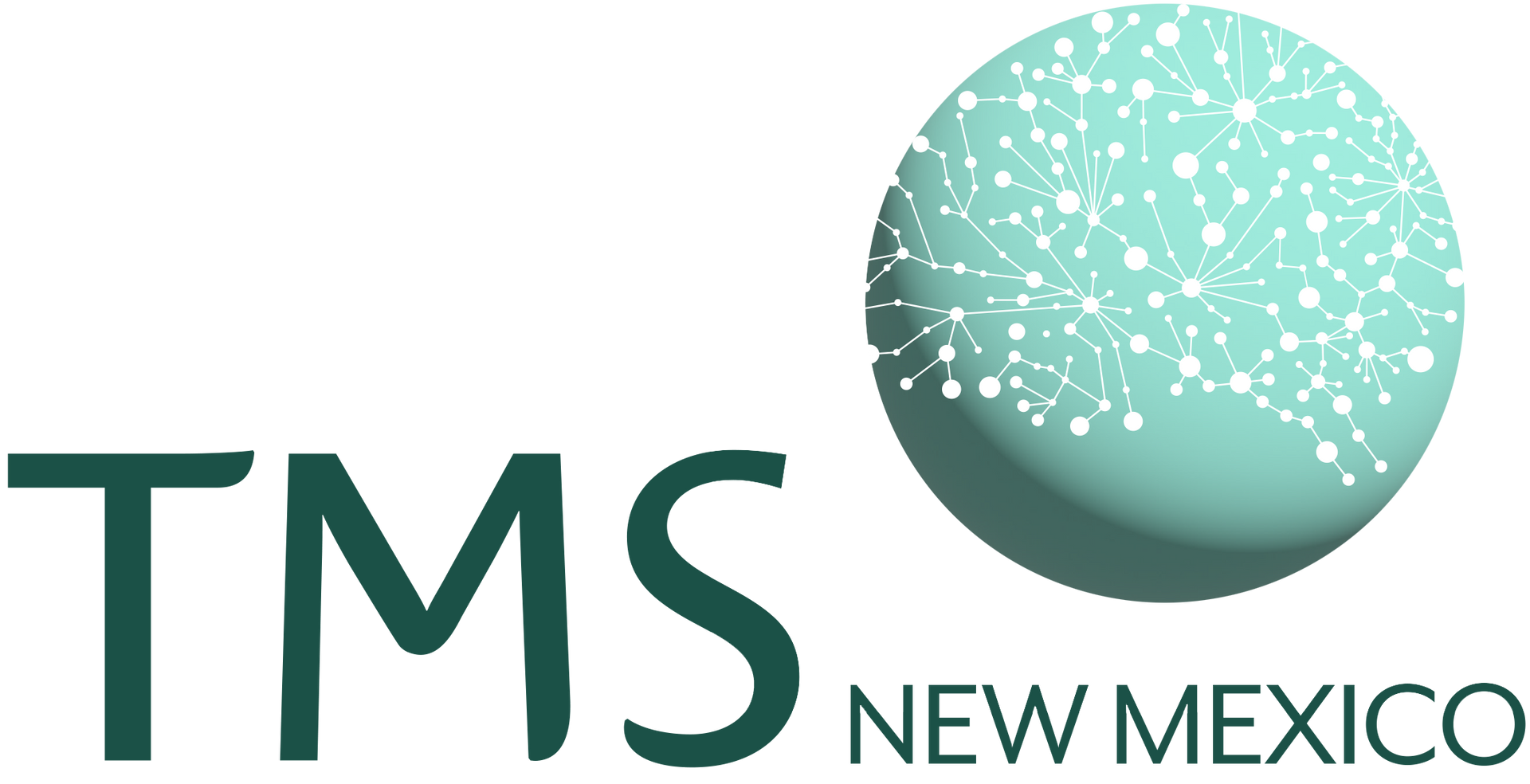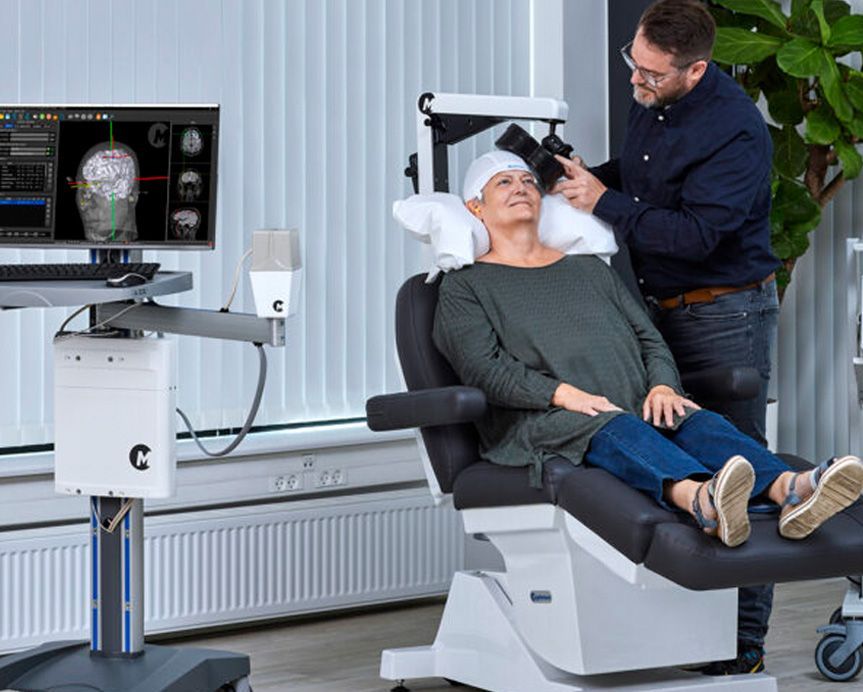300 Paseo De Peralta Suite 208, Santa Fe, NM 87501
EEG and TMS: A Breakthrough for Alzheimer’s Care
According to the Alzheimer's Association, nearly seven million Americans are living with Alzheimer's. And Alzheimer's Disease International says that the disease impacts over 55 million worldwide, a number that will likely double by 2030.
Alzheimer's disease is a significant global health challenge, and it places a heavy emotional and financial burden on families and caregivers. As prevalence rates rise, the urgent need for innovative treatments grows, driving researchers to explore new methods for managing this complex disease.
One promising approach involves integrating electroencephalography (EEG) with transcranial magnetic stimulation (TMS). Together, these tools offer a non-invasive, personalized way to address the disruptions in brain activity that contribute to Alzheimer's disease. By leveraging the precision of EEG to guide TMS therapy, clinicians can target affected brain areas with unparalleled accuracy.
This blog will explore these advancements and how the TMS-EEG intervention paves the way for improved cognitive function and quality of life in patients living with Alzheimer's disease.
Understanding EEG and TMS in Alzheimer's Treatment
EEG is a well-established diagnostic tool that measures the brain's electrical activity through small electrodes placed on the scalp. It captures real-time brain wave patterns, allowing researchers and clinicians to study how different brain regions communicate and function. In Alzheimer's disease, EEG provides critical insights into disrupted connectivity in brain networks, such as the Default Mode Network, which plays a central role in memory and cognitive function.
TMS, on the other hand, uses magnetic pulses to stimulate specific neural pathways. When guided by EEG data, TMS can precisely target affected brain areas, making it a highly personalized treatment option. Research indicates that TMS-EEG can enhance neuroplasticity, improve connectivity within the Default Mode Network, and normalize brain activity disrupted by Alzheimer's.
The Default Mode Network, often impaired by amyloid-beta and tau protein buildup, connects critical regions like the precuneus (an area of the parietal lobe) and frontal cortex. Disruptions in this network contribute to memory loss and cognitive decline. By restoring these connections, TMS-EEG offers hope for slowing disease progression and enhancing patients' day-to-day abilities.
Breakthrough Research on Personalized TMS-EEG for Alzheimer's
A phase II trial conducted by Sinaptica Therapeutics underscores the groundbreaking potential of TMS-EEG. Over 52 weeks, participants with mild-to-moderate Alzheimer's disease who received TMS-EEG therapy experienced a 44% slower rate of cognitive decline compared to the placebo group. This metric was measured using the Clinical Dementia Rating Scale-Sum of Boxes (CDR-SB), which tracks changes in cognitive abilities and daily functioning. Patients in the treatment group showed a mean increase of 1.36 points on the CDR-SB, compared to 2.45 points in the sham group.
The trial also demonstrated improvements in activities of daily living and behavioral symptoms, with no serious adverse events reported. Mild side effects, such as headaches or scalp discomfort, were minimal and temporary. These findings highlight the safety and efficacy of TMS-EEG, positioning it as a promising addition to Alzheimer's disease treatment interventions.
Importantly, this study incorporated advanced imaging techniques, including MRI and EEG, to map the brain's connectivity patterns and optimize TMS targeting. This level of precision allowed clinicians to engage specific areas within the Default Mode Network, maximizing therapeutic outcomes. While the study's small sample size and challenges during the COVID-19 pandemic underscore the need for more extensive trials, the results are a compelling step forward.

Mechanisms of Action in TMS-EEG
The effectiveness of TMS-EEG lies in its ability to address the neural dysfunctions underlying Alzheimer's disease. High-frequency repetitive TMS has been shown to enhance neuroplasticity, enabling the brain to form new connections and strengthen existing ones. This capability is particularly crucial for restoring disrupted pathways within the Default Mode Network, as mentioned above.
EEG enhances this process by identifying specific abnormalities in brain activity, such as local hyperexcitability in the parietal Default Mode Network or disrupted connectivity between the precuneus and frontal cortex. By tailoring TMS to address these specific disruptions, clinicians can achieve measurable improvements in cognitive function, memory, and behavioral symptoms.
Notably, different TMS protocols produce distinct effects. For instance, high-frequency (10 Hz) stimulation has been associated with significant cognitive and behavioral improvements, while low-frequency (1 Hz) stimulation has shown limited benefits. This difference demonstrates the importance of optimizing stimulation parameters based on individual needs (a process made possible through EEG-guided personalization).
Expanding Applications of TMS-EEG
While current research focuses on Alzheimer's disease, TMS-EEG has broader implications for neurodegenerative and psychiatric conditions. Early interventions using TMS-EEG could delay the onset of severe Alzheimer's symptoms by addressing disrupted brain connectivity in its earliest stages. Additionally, the technology's adaptability makes it a promising tool for related conditions, such as mild cognitive impairment, which often precedes Alzheimer's.
TMS-EEG also has the potential for off-label uses. For instance, research is exploring its role in enhancing peak cognitive performance, aiding post-stroke recovery, and addressing other conditions like attention deficits. These applications highlight the versatility of TMS-EEG and its potential to reshape neurological and psychiatric care.
What These Advancements Mean for Patients and Caregivers
For Alzheimer's patients, the practical benefits of TMS-EEG are significant. Improved cognitive function can make everyday tasks more manageable, restoring a sense of independence and dignity. Caregivers also stand to benefit, as reduced cognitive and behavioral symptoms in those they care for can alleviate some of the emotional and logistical burdens of caregiving.
Additionally, the non-invasive nature of TMS-EEG makes it an appealing alternative to more invasive treatments. With minimal side effects and no need for anesthesia or surgery, it provides a safe and accessible option for patients at varying stages of Alzheimer's disease.
"A truly caring practitioner makes all the difference to me when it comes to mental health, and Sloan is the epitome of such a practitioner. She is invested in clients’ wellbeing and shows it over and over in the course of this treatment—and beyond. Highly, highly recommend!" - Sally Baker (TMS New Mexico Patient)
Access Personalized Alzheimer's Care at TMS New Mexico

As advancements in TMS-EEG continue to positively change Alzheimer's treatment, this personalized, non-invasive approach offers new hope for patients and caregivers alike.
At TMS New Mexico, we specialize in EEG treatment and TMS therapy, providing innovative and evidence-based treatments tailored to each patient's unique needs. By leveraging EEG insights, our team delivers precise and effective interventions to slow Alzheimer's disease progression, improve cognitive function, and enhance quality of life.
Whether you're seeking treatment for Alzheimer's disease, depression, anxiety, or another condition, we are committed to offering patient-centered care backed by the latest scientific advancements.
Schedule a consultation today to learn how TMS New Mexico can support you or a loved one on the path to improved mental and neurological health.

Cited Sources:
- Neurophysiological signatures of default mode network dysfunction and cognitive decline in Alzheimer’s disease. Recep A. Ozdemir, Brice Passera, Peter J. Fried, Daniel Press, Lynn W. Shaughnessy, Stephanie Buss, Mouhsin M. Shafi. bioRxiv 2024.09.16.613373; https://doi.org
- Transcranial magnetic stimulation of the precuneus enhances memory and neural activity in prodromal Alzheimer's disease, NeuroImage, Volume 169,2018, Pages 302-311,ISSN 1053-8119, https://doi.org/10.1016/j.neuroimage.2017.12.048.

HELPFUL LINKS TO LEARN MORE
Book an appointment at our mental health clinic in Santa Fe, New Mexico. You are not alone!

READY TO GET STARTED?
At TMS New Mexico of Santa Fe, we specialize in advanced neurocare and psychiatric services aimed at improving mental health for residents of Santa Fe County and Los Alamos County. Our tailored treatment plans are designed to specifically target depression, empowering our clients to lead more fulfilling lives. If you or a loved one struggles with depression, anxiety, OCD, PTSD, or another mental health issue, we may be able to help.
SERVICE AREAS
- SANTA FE
- CAÑONCITO
- SETON VILLAGE
- GALISTEO
- GLORIETTA
- LA CLENEGA
- LOS CERRILLOS
- MADRID
- TESUQUE
- CHUPADERO
- POJOAQUE
- LOS ALMOS
- WHITE ROCK
- NAMBE
- PECOS
- SANTA FE
- CAÑONCITO
- SETON VILLAGE
- GALISTEO
- GLORIETTA
- LA CLENEGA
- LOS CERRILLOS
- MADRID
- TESUQUE
- CHUPADERO
- POJOAQUE
- LOS ALAMOS
- WHITE ROCK
- NAMBE
- PECOS
- TAOS
MAIN LINKS
CONTACT
300 Paseo De Peralta Suite 208, Santa Fe, NM 87501
- Mon - Fri
- -
- Sat - Sun
- Closed
COMPANY
NPI# 1811753767

All Rights Reserved | TMS New Mexico

